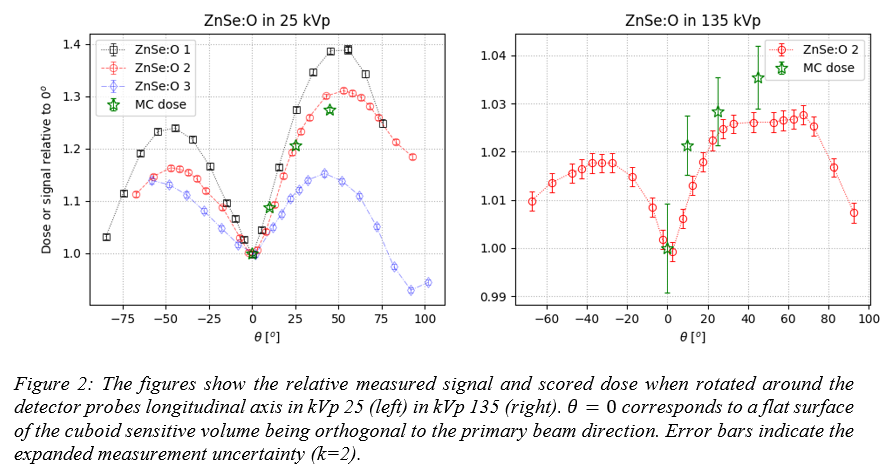Intrinsic energy dependent response of inorganic scintillation detectors for in vivo dosimetry
OC-0293
Abstract
Intrinsic energy dependent response of inorganic scintillation detectors for in vivo dosimetry
Authors: Peter Georgi1, Åsa Carlsson Tedgren2, Linda Persson3, Jacob Graversen Johansen1,4
1Aarhus University, Department of Clinical Medicine, Aarhus, Denmark; 2Karolinska Hospital, Department of Medical Physics and Nuclear Medicine, Stockholm, Sweden; 3Swedish Radiation Safety Authority, National Regulation Department, Stockholm, Sweden; 4Aarhus University Hospital, Department of Oncology, Aarhus, Denmark
Show Affiliations
Hide Affiliations
Purpose or Objective
Inorganic scintillation detectors are emerging as a tool for in vivo dosimetry in brachytherapy (BT). The response of any detector depends on the energy spectrum of the incident radiation. While absorbed dose energy dependence, mainly caused by water inequivalence, can be obtained from Monte Carlo (MC) simulation the dose-to-signal efficiency or intrinsic energy dependence cannot. This study aims to characterize the intrinsic energy dependence of fiber-coupled inorganic scintillation detectors in X-ray beam qualities relevant for BT (< 1 MeV).
Material and Methods
3 point-like detectors made from fiber-coupled cuboid ZnSe:O-based scintillators (1 0.5x0.5x2 mm3 and 2 0.5x0.5x1 mm3) were calibrated at a National Metrology Laboratory for ionizing radiation. The calibration was done in terms of air kerma free in air, K_air, in 13 X-ray beam qualities, Q, from 25 to 300 kVp (BIPM/CCRI 25-250 kV and ISO 4037 N-series), and in terms of dose-to-water, D_w, in a Co-60 beam, Q_0. For each quality, the relative intrinsic energy dependence, R, was determined relative to Q_0 as

where M was the detector read-out. The mean dose to the detector, D_det, relative to K_air and D_w, were obtained with the MC code Topas (Geant4) using X-ray spectra obtained with the SpekPy software and laboratory filtration data.
The angular dependence of the detector response was measured for all detectors in a 25 kVp (0.20 mm Al HVL) beam, and for a single detector in a 135 kVp (0.35 mm Cu HVL) beam, by rotating the detectors along the fiber's longitudinal axis, which was perpendicular to the beam direction.
Results
R was constant within 5% for all detectors above 30 keV, indicating negligible variation in typical BT beam qualities e.g., the Ir-192 spectrum, fig. 1. Below 30 keV the detectors showed noticeable variation, likely due to differences in detector material and geometry not captured by the simulations using nominal dimensions. All detectors showed angular dependence in the 25 kVp quality varying with 20-40% over the measured angles, fig. 2. The dependence was asymmetric, assumed to result from non-uniform radiation damage and asymmetric detector geometry. In 135 kVp the signal variation dropped to below 3%.


Conclusion
The detectors have shown promise for dosimetry applications in in-vivo Ir-192 BT, where the photon spectrum contribution is <1% of total fluence below 30 keV, above which R is nearly constant. The detectors could thus be calibrated in any quality from 30 keV and above, and transferred to another quality with energy dependent correction factors approximated purely by absorbed-dose energy dependence from MC. Furthermore, the current methodology can be used as a tool to identify geometric discrepancies in actual and MC scenarios, as shown here for energies below 30 keV.
An investigation of the significance of detector design variations, precision of the calculated beam qualities, and increased MC precision are planned.